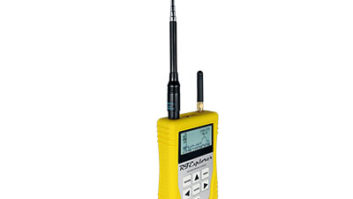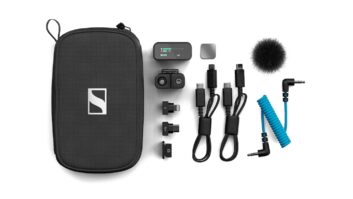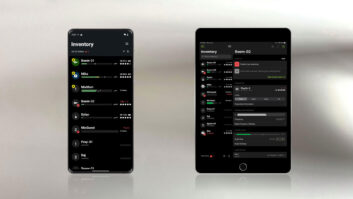by Clive Young.
This month [February, 2009], the 700 MHz frequency band, previously used for TV channels 52 through 69, will be handed over to public safety and commercial interests–which means wireless mic users with gear operating in that spectrum area have to vacate the premises by mid-February. As noted in last month’s cover story, only some end-users even know of the situation; now, with awareness on the upswing, many are taking a new look at their alternatives.
The majority of modern wireless microphone systems operate in the range of 470 MHz to 806 MHz–the UHF television band. With the 700 MHz area–roughly 698 MHz to 806 MHz–no longer available, a full third of available space has been removed from general use. As a result, end-users–and pro audio manufacturers–are showing increased interest in wireless mic products that can hopefully avoid some of the congestion expected to result.
Among the more high-profile options are digital wireless microphones, where the rising interest from end-users has been matched by an uptick in new products from manufacturers, including relatively recent releases from Sony, AKG and Line 6.
“The interest in digital wireless systems is very high,” noted Wolfgang Fritz, product marketing manager for Tour Sound at AKG. “A well-engineered and designed digital transmission has advantages for multichannel systems and audio quality. More channels can be used in the same RF bandwidth, and the digital signal is more robust and resistant to interference signals.” Additionally, many digital systems offer signal encryption, safeguarding users from electronic eavesdropping.
At Winter NAMM, AKG launched its DMS 700 digital wireless microphone system, which operates with two frequency bands, each providing a tuning range of up to 155 MHz. At the same show, Line 6 debuted its X2 XDR955 handheld microphone system, the latest addition to its series of digital wireless systems used by the likes of Jimmy Page, Joe Walsh, Steve Stevens and others. Meanwhile, Sony’s Digital Wireless System, introduced at AES last fall, is aimed at video production and ENG use.
End-users are expecting more from alternate systems than merely the fact that they avoid congested areas of the frequency spectrum. Don Boomer, Line 6 product line manager, noted, “We are in an unaffected portion of the spectrum–the 900 MHz ISM band–but while the ability to find clear frequencies on which to operate is a growing concern, most of the interest we’re seeing is for the tonality of the wireless. Our digital mics do not use companders, so they do not suffer the sonic degradation common to analog units.”
While so many parts of the signal chain have gone digital, wireless mics have been one of the areas to meet a bit of resistance in the past, in part due to a perception that such microphones fall into the “all or nothing” trap, where a little lost data could result in no audio at all.
“For a simple digital system, that is right,” said Fritz. “No data equals no audio. However, our new DMS 700 digital microphone systems has a lot of security features to prevent a dropout and to recreate the digital signal stream; you will get the best audio performance until the signal is really too weak for any digital–as well as analog–receiver.”
According to Boomer, his system likewise rebuilds signal, using four receivers on four different frequencies: “We can lose about half the data in most cases without anyone noticing a loss of sound quality. But like all systems, there is a range limit; ours is about 300 feet line of sight. The difference between our digital system and typical analog is that if you manage to get enough interference, ours will mute–which is much more preferable that a huge bunch of static noise through the system or worse, like shifting over to an unintentional transmitter. Breaker, breaker!”
Bridging the gap between analog and digital wireless mics are “digital hybrid” systems, such as those sold by Lectrosonics (the aptly named Digital Hybrid Wireless) and Sabine (SWM7000 Smart Spectrum Wireless). Such gear typically uses DSP to alter an analog signal, reducing noise while achieving a flat frequency response and/or onboard signal processing. Sabine’s system notably operates completely outside the television spectrum (in the 2.4 GHz range, with 70 potential channels), avoiding the looming spectrum issues, though sharing space with licensed, low-powered consumer devices (as soon will conventional wireless with under the white spaces legislation allowing the new class of “TVBD” or Television Band Devices in the already reduced TV spectrum).
Still, the arrival of new gear options doesn’t automatically mean that problems of frequency congestion go away; coordinating wireless microphone parameters and usage will require manufacturers to work with the government and simultaneously educate their customers for some time to come. Fritz explained, “Big multichannel applications like a large sport or political events, traveling concert tours, musical and theater productions could be a real problem in the future. All wireless manufacturers are working together to inform users and the government about future problems.”
Line 6
www.line6.com/digitalwireless
Sabine
www.sabine.com
Lectrosonics
www.lectrosonics.com





